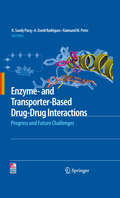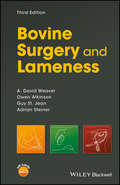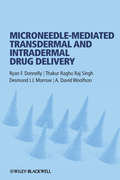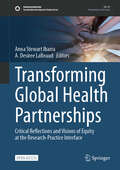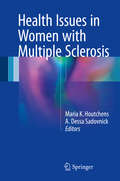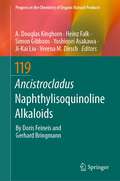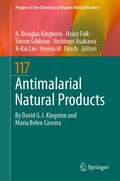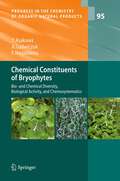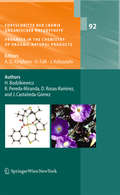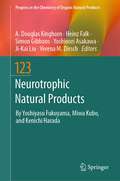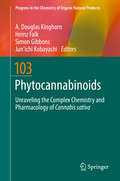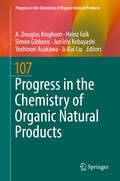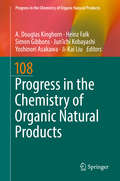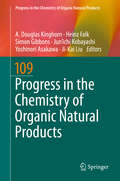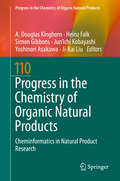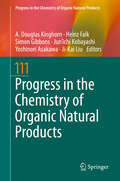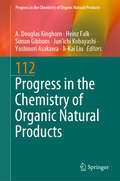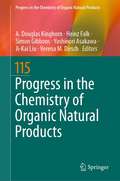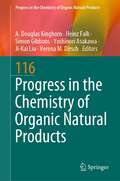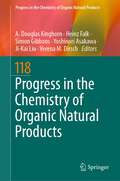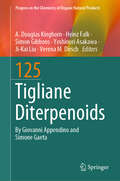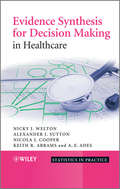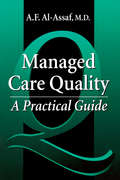- Table View
- List View
Enzyme- and Transporter-Based Drug-Drug Interactions
by A. David Rodrigues Raimund M. Peter K. Sandy PangGermination of the thought of "Enzymatic- and Transporter-Based Drug-Drug Interactions: Progress and Future Challenges" Proceedings came about as part of the annual meeting of The American Association of Pharmaceutical Scientists (AAPS) that was held in San Diego in November of 2007. The attendance of workshop by more than 250 pharmaceutical scientists reflected the increased interest in the area of drug-drug interactions (DDIs), the greater focus of PhRMA, academia, and regulatory agencies, and the rapid pace of growth in knowledge. One of the aims of the workshop was to address the progress made in quantitatively predicting enzyme- and transporter-based DDIs as well as highlighted areas where such predictions are poor or areas that remain challenging for the future. Because of the serious clinical implications, initiatives have arisen from the FDA (http://www.fda.gov/cber/gdlns/interactstud.htm) to highlight the importance of enzyme- and transporter-based DDIs. During the past ten to fifteen years, we have come to realize that transporters, in addition to enzymes, play a vital role in drug elimination. Such insight has been possible because of the continued growth in PK-ADME (pharmacokinetics-absorption-distribution-metabolism-excretion) knowledge, fueled by further advances in molecular biology, greater availability of human tissues, and the development of additional and sophisticated model systems and sensitive assay methods for studying drug metabolism and transport in vitro and in vivo. This has sparked an in-depth probing into mechanisms surrounding DDIs, resulting from ligand-induced changes in nuclear receptors, as well as alterations in transporter and enzyme expression and function. Despite such advances, the in vitro and in vivo study of drug interactions and the integration of various data sets remain challenging. Therefore, it has become apparent that a proceeding that serves to encapsulate current strategies, approaches, methods and applications is necessary. As Editors, we have assembled a number of opinion leaders and asked them to contribute chapters surrounding these issues. Many of these are the original Workshop speakers whereas others had been selected specially to contribute on topics related to basic and applied information that had not been covered in other reference texts on DDI. The resulting tome, entitled Enzyme- and Transporter-Based Drug Interactions: Progress and Future Challenges, comprises of four sections. Twenty-eight chapters covering various topics and perspectives related to the subject of metabolic and transporter-based drug-drug interactions are presented.
Bovine Surgery and Lameness (Library Of Veterinary Practice Ser.)
by A. David Weaver Adrian Steiner Owen Atkinson Guy St. JeanThe revised and updated Third Edition of Bovine Surgery and Lameness offers veterinarians a concise text ideal for use in the field. Offers a fully revised edition of the popular and well-respected book on bovine surgery and lameness Presents a practical quick-reference guide ideal for the field veterinarian Covers both common surgical procedures and the latest information on combating lameness Written by an expert team of international authors
Bovine Surgery and Lameness (Library of Veterinary Practice)
by A. David Weaver Adrian Steiner Guy St. JeanBovine surgery is both challenging and complicated. Not only does the surgeon have to decide whether surgery is economically justified, but surgery often has to be performed in a sub-optimal environment. Following on from the worldwide success of the first edition, this new edition continues to act as a step-by-step guide to standard surgical techniques. Now with two new authors from Switzerland and North America, both the text and illustrations have been considerably expanded. In addition, special attention is given to issues relating to peri-operative analgesia and animal welfare, food safety, and drug dosages. Maintains the popular concise and accessible format of the first edition – perfect for on-the-field work; Two additional authors, with world renowned expertise in bovine surgery and lameness; Detailed instruction on the basics of effective surgery – proper instrumentation, asepsis, effective anaesthesia and essential techniques; Much more information on lameness, as well as numerous new line drawings to aid instruction.
Microneedle-mediated Transdermal and Intradermal Drug Delivery
by Desmond I. Morrow A. David Woolfson Ryan F. Donnelly Thakur Raghu SinghOne of the latest techniques in drug delivery, microneedles are used for administering a wide range of drug substances used to treat various medical conditions. Thorough background information is included providing a history of the field. Various methods used to produce micorneedles are described as well as a snapshot of the future directions within the industry. Written by highly qualified authors, this new text is the only title providing a comprehensive review of microneedle research in the fields of transdermal and intradermal drug delivery.
Transforming Global Health Partnerships: Critical Reflections and Visions of Equity at the Research-Practice Interface (Sustainable Development Goals Series)
by Anna Stewart Ibarra A. Desiree LaBeaudThis is a book about the human experience of conducting global health research, linked to operational responses to the control and prevention of diseases worldwide. Rather than a manual or how-to guide, we propose a roadmap and vision of equitable, sustainable, and impactful partnerships shared through a rich interweaving of voices: North and South, academics and community practitioners, senior mentors and trainees, multiple generations, and multiple disciplines. We focus on the stories that need to be told, the successes and the failures, and visions for a healthier and more compassionate future for humanity.This book was written by more than 90 authors from 26 countries, bringing diverse perspectives on global health partnerships' past, present, and future. Although many of the chapters use examples related to infectious diseases, the ideas in this book are relevant to the broader field of global health research and practice.This book is organized into three sections, broadly related to foundational concepts, present experiences (case studies), and future visions. The first section focuses on the historical colonial legacy of global health and the foundations needed for equitable partnerships, introducing key themes explored throughout the book. These include concepts related to decolonization, ethics, gender, systems approaches and transdisciplinary science, Planetary Health, One Health, team science, and communication. The book's second section draws on case studies of global health partnerships to understand where we are today in global health. Authors share their experiences responding to global health threats, including disease outbreaks, refugee health, stigma, and sexually transmitted diseases, and post-disaster community recovery. The book's third section articulates a new vision for global health partnerships to co-create a more peaceful, equitable, and loving world. This vision is urgently needed to address the challenges emerging in the context of global climate change, the COVID-19 pandemic, and other human threats. This is an open access book.
Health Issues in Women with Multiple Sclerosis
by Maria K. Houtchens A. Dessa SadovnickThis book addresses specific concerns of females affected by multiple sclerosis, where women are disproportionally impacted by the disease. MS is an autoimmune disease of the central nervous system affecting young adults of reproductive age. This book presents the current understanding of genetic variables, hormonal influences, immunological milieu and neurological outcomes, discussing issues such as fertility, pregnancy management, and menopause, as well as end of life care and mortality in women with MS. With contributions by international experts, this interdisciplinary book will serve as a useful reference and guide for MS specialists, general neurologists, obstetricians/gynecologists, physicians in training, family practice doctors, clinical nurse specialists in multiple sclerosis, and all other healthcare professionals involved in the care and treatment of women affected by MS.
Basiszorg 1: Basiswerk V&V, niveau 3 (Basiswerken Verpleging en Verzorging)
by T. Stavast D. E. Zwart A. DitoBasiszorg 1: Basiswerk V&V, niveau 3 (Basiswerken Verpleging en Verzorging)
Ancistrocladus Naphthylisoquinoline Alkaloids (Progress in the Chemistry of Organic Natural Products #119)
by A. Douglas Kinghorn Heinz Falk Simon Gibbons Yoshinori Asakawa Ji-Kai Liu Verena M. DirschThis book describes a unique class of secondary metabolites, the mono- and dimeric-naphthylisoquinoline alkaloids. They exclusively occur in lianas of the palaeotropical Ancistrocladaceae and Dioncophyllaceae plant families. Their unprecedented structures include stereogenic centers and rotationally hindered, and therefore stereogenic, axes. Extended recent investigations on six Ancistrocladus species from Asia, as reported in this contribution, shed light on their fascinating phytochemical productivity, with over 100 intriguing natural products. This high chemodiversity arises from a similarly unique biosynthesis from acetate-malonate units, following a novel polyketidic pathway to plant-derived isoquinoline alkaloids. Some of the compounds show most promising anti-parasitic activities. Additionally, strategies for the regio- and stereoselective total synthesis of the alkaloids, including the directed construction of the chiral axis, are also presented.
Antimalarial Natural Products (Progress in the Chemistry of Organic Natural Products #117)
by A. Douglas Kinghorn Heinz Falk Simon Gibbons Yoshinori Asakawa Ji-Kai Liu Verena M. DirschThis volume begins with a short history of malaria and follows with a summary of its biology. It then traces the fascinating history of the discovery of quinine for malaria treatment, and then describes quinine’s biosynthesis, its mechanism of action, and its clinical use, concluding with a discussion of synthetic antimalarial agents based on quinine’s structure. It also covers the discovery of artemisinin and its development as the source of the most effective current antimalarial drug, including summaries of its synthesis and biosynthesis, its mechanism of action, and its clinical use and resistance. A short discussion of other clinically used antimalarial natural products leads to a detailed treatment of additional natural products with significant antiplasmodial activity, classified by compound type. Although the search for new antimalarial natural products from Nature’s combinatorial library is challenging, it is very likely to yield new antimalarial drugs. This book thus ends by identifying ten natural products with development potential as clinical antimalarial agents.
Chemical Constituents of Bryophytes: Bio- and Chemical Diversity, Biological Activity, and Chemosystematics (Progress in the Chemistry of Organic Natural Products #95)
by A. Douglas Kinghorn Heinz Falk Junichi Kobayashi Agnieszka Ludwiczuk Fumihiro Nagashima Yoshinori AsakawaFor some 50 years, Professor Asakawa and his group have focused their research on the chemical constituents of bryophytes and have found that these plants contain large numbers of secondary metabolites, such as terpenoids, acetogenins, and aromatic compounds representative of many new skeletons, which exhibit interesting biological activities. Individual terpenoids, when found as constituents of both a bryophyte and a higher plant, tend to occur in different enantiomeric forms. Professor Asakawa has covered the literature on bryophytes in two earlier volumes of Progress in the Chemistry of Organic Natural Products, namely, Volumes 42 (1982) and 65 (1995). Since the publication of the latter volume, a great deal of new information has appeared on bryophytes. One example is that known sex pheromones of algae have been discovered in two liverworts, indicating that some members of the latter taxonomic group might originate from brown algae. From information provided in this volume, it is suggested that two orders of the Marchantiophyta should be combined.
Fortschritte der Chemie organischer Naturstoffe / Progress in the Chemistry of Organic Natural Products, Vol. 92
by A. Douglas Kinghorn Herbert Budzikiewicz Heinz Falk Rogelio Pereda-Miranda Daniel Rosas-Ramírez Junichi Kobayashi Jhon Castañeda-GómezThe volumes of this classic series, now referred to simply as "Zechmeister" after its founder, L. Zechmeister, have appeared under the Springer Imprint ever since the series' inauguration in 1938. The volumes contain contributions on various topics related to the origin, distribution, chemistry, synthesis, biochemistry, function or use of various classes of naturally occurring substances ranging from small molecules to biopolymers. Each contribution is written by a recognized authority in his field and provides a comprehensive and up-to-date review of the topic in question. Addressed to biologists, technologists, and chemists alike, the series can be used by the expert as a source of information and literature citations and by the non-expert as a means of orientation in a rapidly developing discipline.
Neurotrophic Natural Products (Progress in the Chemistry of Organic Natural Products #123)
by A. Douglas Kinghorn Heinz Falk Simon Gibbons Yoshinori Asakawa Ji-Kai Liu Verena M. DirschThis book deals with neurotrophins (NGF, BDNF, NT3, NT4), which can decrease cell death, induce differentiation, as well as sustain the structure and function of neurons. This makes neurotrophins potential therapeutic agents for the treatment of neurodegenerative disorders. However, these proteins have so far been ineffective in clinical trials mostly because they cannot pass the blood-brain barrier owing to their high-molecular weights. Consequently, small molecules that mimic neurotrophins and stimulate the synthesis of endogenous neurotrophins or enhance their neurotrophic actions are expected to be promising alternatives. Small-molecule natural products, which have been used in dietary functional foods or in traditional medicine over the course of human history, have potential to be developed as new therapeutic agents against neurodegenerative conditions such as Alzheimer’s disease. In this book, the authors introduce a variety of natural products possessing neurotrophic properties such as neurogenesis, neurite outgrowth promotion (neuritogenesis), and neuroprotection and focus on the chemistry and biology of several neurotrophic natural products.
Phytocannabinoids
by A. Douglas Kinghorn Heinz Falk Simon Gibbons Jun’ichi KobayashiThe book presents the current state of the art on phytocannnabinoid chemistry and pharmacology and will be of much use to those wishing to understand the current landscape of the exciting and intriguing phytocannabinoid science. The focus is on natural product cannabinoids which have been demonstrated to act at specific receptor targets in the CNS.
Progress in the Chemistry of Organic Natural Products 107 (Progress in the Chemistry of Organic Natural Products #107)
by A. Douglas Kinghorn Heinz Falk Simon Gibbons Jun'Ichi Kobayashi Yoshinori Asakawa Ji-Kai LiuThe first review describes examples of very promising compounds discovered from plants acquired from Africa, Southeast Asia, the Americas, and the Caribbean region with potential anticancer activity. These include plant secondary metabolites of the diphyllin lignan, penta[b]benzofuran, triterpenoid, and tropane alkaloid types. The second review presents 40 more erythrinan alkaloids, which were either new or were missed out in the last major reviews, bringing to a total of 154 known erythrinan alkaloids known to date. The reported pharmacological activities of the new and known alkaloids showed a greater bias towards central nervous system and related activities. Other prominent activities reported were antifeedant or insecticidal, cytotoxicity/antitumor/anticancer/estrogenic, antiprotozoal, antiinflammatory, antioxidant, antifungal and antiviral activities.
Progress in the Chemistry of Organic Natural Products 108 (Progress in the Chemistry of Organic Natural Products #108)
by A. Douglas Kinghorn Heinz Falk Simon Gibbons Jun'Ichi Kobayashi Yoshinori Asakawa Ji-Kai LiuThe first contribution summarizes current trends in research on medicinal plants in Mexico with emphasis on work carried out at the authors' laboratories. The most relevant phytochemical and pharmacological profiles of a selected group of plants used widely for treating major national health problems are described. The second contribution provides a detailed survey of the so far reported literature data on the capacities of selected oxyprenylated phenylpropanoids and polyketides to trigger receptors, enzymes, and other types of cellular factors for which they exhibit a high degree of affinity and therefore evoke specifice responses. And the third contribution discusses aspects of endophytic actinobacterial biology and chemistry, including biosynthesis and total synthesis of secondary metabolites produced in culture. It also presents perspectives fo the future of microbial biodiscovery, with emphasis on the seondary metabolism of endophytic actinobacteria.
Progress in the Chemistry of Organic Natural Products 109 (Progress in the Chemistry of Organic Natural Products #109)
by A. Douglas Kinghorn Heinz Falk Simon Gibbons Yoshinori Asakawa Jun’ichi Kobayashi Ji-Kai LiuThis volume comprises three reviews. The first describes isolation, structure determination, syntheses, and biochemistry of the low molecular weight compounds of the secretion of exocrine glands of termies with emphasis to pheromones and defensive compounds. The second review describes recent studies on isolation and structure elucidation of bioactive compounds involved in the life cycle and determination of the molecular mechanisms of the developmental events observed in higher plants. The third contribution reports on the current body of knowledge of African propolis, with a particular emphasis on its chemistry and biological activity.
Progress in the Chemistry of Organic Natural Products 110: Cheminformatics in Natural Product Research (Progress in the Chemistry of Organic Natural Products #110)
by A. Douglas Kinghorn Heinz Falk Simon Gibbons Yoshinori Asakawa Jun’ichi Kobayashi Ji-Kai LiuThe book summarizes important aspects of cheminformatics that are relevant for natural product research. It highlights cheminformatics tools that help to match natural products with their respective biological targets or off-targets, and discusses the potential and limitations of this approach.
Progress in the Chemistry of Organic Natural Products 111 (Progress in the Chemistry of Organic Natural Products #111)
by A. Douglas Kinghorn Heinz Falk Simon Gibbons Yoshinori Asakawa Jun’ichi Kobayashi Ji-Kai LiuThe first chapter in volume 111 summarizes research on the sesterterpenoids, which are known as a relatively small group of natural products. However, they express a variety of simple to complicated chemical structures. This chapter focuses on the chemical structures of sesterterpenoids and how their structures are synthesized in Nature. The second chapter is devoted to marine-derived fungi, which play an important role in the search for structurally unique secondary metabolites, some of which show promising pharmacological activities that make them useful leads for drug discovery. Marine natural product research in China in general has made enormous progress in the last two decades as described in this chapter on fungal metabolites. This contribution covers 613 new natural products reported from 2001 to 2017 from marine-derived fungi obtained from algae, sponges, corals, and other marine organisms from Chinese waters.
Progress in the Chemistry of Organic Natural Products 112 (Progress in the Chemistry of Organic Natural Products #112)
by A. Douglas Kinghorn Heinz Falk Simon Gibbons Yoshinori Asakawa Jun’ichi Kobayashi Ji-Kai LiuThe first chapter describes the oldest method of communication between living systems in Nature, the chemical language. Plants, due to their lack of mobility, have developed the most sophisticated way of chemical communication. Despite that many examples involve this chemical communication process - allelopathy, there is still a lack of information about specific allelochemicals released into the environment, their purpose, as well as in-depth studies on the chemistry underground. These findings are critical to gain a better understanding of the role of these compounds and open up a wide range of possibilities and applications, especially in agriculture and phytomedicine. The most relevant aspects regarding the chemical language of plants, namely, kind of allelochemicals have been investigated, as well as their releasing mechanisms and their purpose, are described in this chapter. The second chapter is focused on the natural products obtained from Hypericum L., a genus of the family Hypericaceae within the dicotyledones. Hypericum has been valued for its important biological and chemical properties and its use in the treatment of depression and as an antibacterial has been well documented in primary literature and ethnobotanical reports. The present contribution gives a comprehensive summary of the chemical constituents and biological effects of this genus. A comprehensive account of the chemical constituents including phloroglucinol derivatives, xanthones, dianthrones, and flavonoids is included. These compounds show a diverse range of biological activities that include antimicrobial, cytotoxic, antidepressant-like, and antinociceptive effects. The third chapter addresses microtubule stabilizers, which are a mainstay in the treatment of many solid cancers and are often used in combination with molecularly targeted anticancer agents and immunotherapeutics. The taccalonolides are a unique class of such microtubule stabilizers isolated from plants of Tacca species that circumvent clinically relevant mechanisms of drug resistance. Although initial reports suggested that the microtubule stabilizing activity of the taccalonolides is independent of direct tubulin binding, additional studies have found that potent C-22,23 epoxidated taccalonolides covalently bind the Aspartate 226 residue of β-tubulin and that this interaction is critical for their microtubule stabilizing activity. Some taccalonolides have demonstrated in vivo antitumor efficacy in drug-resistant tumor models with exquisite potency and long-lasting antitumor efficacy as a result of their irreversible target engagement. The recent identification of a site on the taccalonolide scaffold that is amenable to modification has provided evidence of the specificity of the taccalonolide-tubulin interaction and the opportunity to further optimize the targeted delivery of the taccalonolides to further improve their anticancer efficacy and potential for clinical development.
Progress in the Chemistry of Organic Natural Products 115 (Progress in the Chemistry of Organic Natural Products #115)
by A. Douglas Kinghorn Heinz Falk Simon Gibbons Yoshinori Asakawa Ji-Kai Liu Verena M. DirschThis book describes current understandings and recent progress into a varied group of natural products. In the first chapter the role that total synthesis may play in revising the structures proposed for decanolides, which are ten-membered lactones found primarily in fungi, frogs, and termites is presented. The following chapter presents the development of the intriguing plant-derived sesquiterpene lactone, thapsigargin, a potent inhibitor of the enzyme, SERCA (sarco-endoplasmic Ca2+ ATPase), which has potential as a lead compound to treat cancer. The third chapter covers the potential of various plant phenolic compounds for treating the tropical and sub-tropical infectious disease, leishmaniasis. In addition the volume presents recent advances related to the plant alkaloid, cryptolepine, which is of particular interest as a lead for the treatment of malaria, trypanosomiasis, and cancer.
Progress in the Chemistry of Organic Natural Products 116 (Progress in the Chemistry of Organic Natural Products #116)
by A. Douglas Kinghorn Heinz Falk Simon Gibbons Yoshinori Asakawa Ji-Kai Liu Verena M. DirschThis volume describes several highly diverse subjects: Chapter 1 explores marine biodiscovery of the North-eastern Atlantic off the coast of Ireland as a model for best practice in research. The second chapter investigates Brazilian Chemical Ecology and examples of insect-plant communication studies that are mediated by natural products demonstrate the beautiful interconnectedness of species in a biome. Our third chapter comprises the advances in the science of the sesquiterpene quinone, perezone, which in 1852 was the first natural product isolated in crystalline form in the New World. The last two chapters are from a Vietnamese group and the first of these follows the phytochemistry, pharmacology, and ethnomedical uses of the genus Xanthium, which produces interesting sulfur and nitrogen containing natural products. Finally, the genus Desmos is discussed, where an overview of its constituent natural products and their in vitro pharmacological potential is described.
Progress in the Chemistry of Organic Natural Products 118 (Progress in the Chemistry of Organic Natural Products #118)
by A. Douglas Kinghorn Heinz Falk Simon Gibbons Yoshinori Asakawa Ji-Kai Liu Verena M. DirschThis volume consists of four chapters that cover a structurally diverse range of naturally occurring compounds. Chapter 1 delves into the chemistry of pyrogallols and their oxidized products, the hydroxy-o-quinones, including their role in cycloaddition reactions in the chemical synthesis of several fungal metabolites. Chapter 2 provides an in-depth description of the constituents of agarwood essential oil and smoke samples that are used in the perfumery industry, with an emphasis on the sesquiterpenoid and chromones constituents so far known. Chapter 3 discusses the defensive chemical ecology of two North American newt species that both produce tetrodotoxin, a well-known neurotoxin that causes paralysis and death in metazoans by disrupting electrical signals in the nerves and muscles. Chapter 4 discusses the limonoids and triterpenoids from the genus Walsura of the plant family Meliaceae, of which a number of species are utilized in several southeastern Asian countries in systems of folk medicine.
Tigliane Diterpenoids (Progress in the Chemistry of Organic Natural Products #125)
by A. Douglas Kinghorn Heinz Falk Simon Gibbons Yoshinori Asakawa Ji-Kai Liu Verena M. DirschThis book reviews the distribution, chemistry, and molecular bioactivity of tiglianes from the very beginning of the studies on these diterpenoids. It provides a summary of their clinical and toxicological literature mostly in its more recent and controversial aspects, while critically analyzing various proposals for their biosynthesis.
Evidence Synthesis for Decision Making in Healthcare
by A. E. Ades Nicky J. Welton Keith R. Abrams Alexander J. Sutton Nicola J. CooperIn the evaluation of healthcare, rigorous methods of quantitative assessment are necessary to establish interventions that are both effective and cost-effective. Usually a single study will not fully address these issues and it is desirable to synthesize evidence from multiple sources. This book aims to provide a practical guide to evidence synthesis for the purpose of decision making, starting with a simple single parameter model, where all studies estimate the same quantity (pairwise meta-analysis) and progressing to more complex multi-parameter structures (including meta-regression, mixed treatment comparisons, Markov models of disease progression, and epidemiology models). A comprehensive, coherent framework is adopted and estimated using Bayesian methods.Key features:A coherent approach to evidence synthesis from multiple sources.Focus is given to Bayesian methods for evidence synthesis that can be integrated within cost-effectiveness analyses in a probabilistic framework using Markov Chain Monte Carlo simulation.Provides methods to statistically combine evidence from a range of evidence structures.Emphasizes the importance of model critique and checking for evidence consistency.Presents numerous worked examples, exercises and solutions drawn from a variety of medical disciplines throughout the book.WinBUGS code is provided for all examples. Evidence Synthesis for Decision Making in Healthcare is intended for health economists, decision modelers, statisticians and others involved in evidence synthesis, health technology assessment, and economic evaluation of health technologies.
Managed Care Quality: A Practical Guide
by A. F. Al-Assaf R. Robyn AssafManaged care organizations are paving the way to the future of health care delivery in the United States and countries around the world. As managed care systems evolve, a major concern is quality. Managed Care Quality: A Practical Guide is a collection of applications and experiences gathered from practicing health professionals in the field of managed care. This first "how to" guide was written to help managed care organizations meet the common objective of ensuring the best quality of services and care. Managed Care Quality: A Practical Guide presents successive steps in implementing quality in health care organizations. It introduces the methods, skills, and practices involved in quality health care programs and offers solutions to problems typically encountered in managed care.
